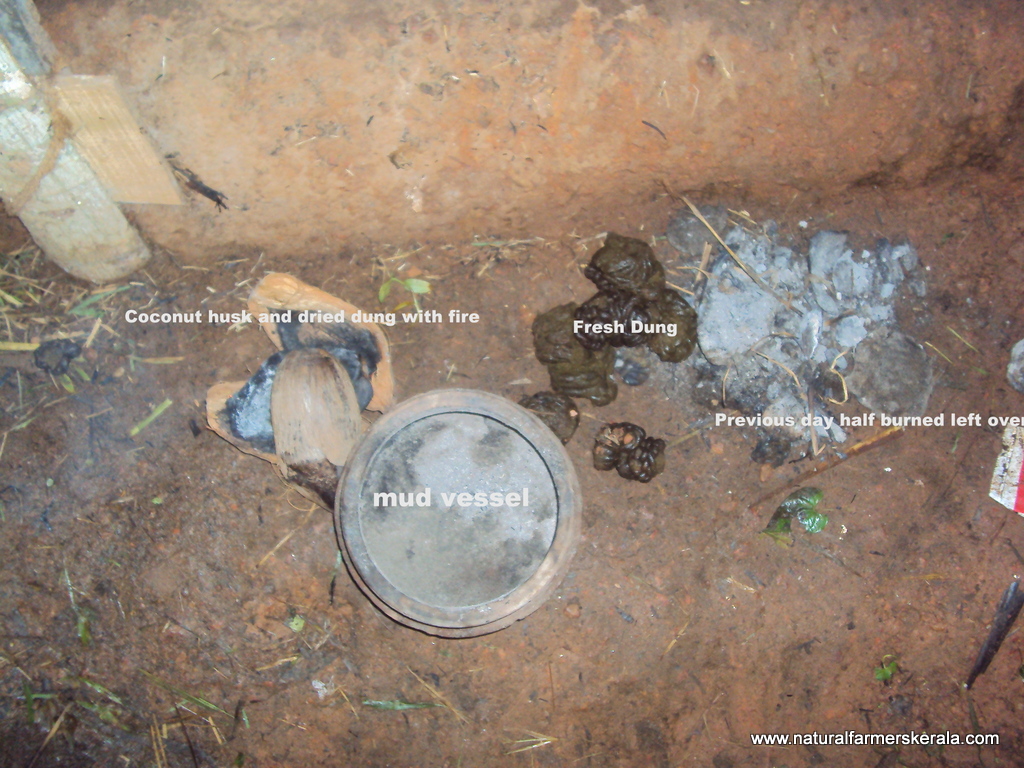Effective Application of Ash in Rural and Farmers Life

Ash plays a vital role in every farmers or rural house hold. There are numerous benefits of ash.
Ash has been replaced by Potash and potassium in our era. During ancient times potash was derived by mixing wood ash with water in a iron pot and evaporating the water for a white end product know as potash, so ash derived from pot(pot-ash). End product is a chemical, which is used for cleaning purposes. Nowadays it is know as potassium, it is mined from rock beds. One of the basic ingredient in fertilizer NPK. N stands for nitrogen, P for phosphorus and K for Potassium. Expect for nitrogen all the other macro and micro-nutrients are present in the soil in unavailable form. You have to add nitrogen or plants have to fix it from atmosphere with the help of certain bacteria. Even ash lacks nitrogen rest all nutrients are present.
Ash contains a lot of nutrients. It can be used as a fertilizer because ash is derived from burning plant waste. For plants to grow they need all necessary nutrients, so when they are burned, they will leave behind lot of macro and micro-nutrients such as phosphorus, Potassium, manganese, iron, zinc, copper etc. But ash doesn’t contain nitrogen which is very necessary for plants to grow. It lack nitrogen because nitrogen reacts while burning bio-mass and is released in the atmosphere.
Keep Ash Away from Small Seedlings as it can Burn
Never add wood ash and water on small seedlings as it will burn them because of lye in ash. First let the plant establish itself then you can feed ash.
78.09% of the atmosphere contains nitrogen. But our crops cannot get it easily. However trees in the forest can easily get it? nitrogen fixing bacteria is one reason but there can be other sources which we are unaware of.
I am sure in a few years there would be certain type of netted carpets which could be laid on the cultivable land and that will take care of the nitrogen fixation. Just replicating the work of nitrogen fixing bacteria. So that farmers don’t have to regularly buy urea and other nitrogen fertilizers. But all this kind of technology is going to further complicate human life.
Nitrogen fertilizer and wood ash is not added together as ammonia reacts with wood ash.
Apart from fertilizers potassium is extensively used in making soaps, fireworks, glass etc.
It is also a important mineral required by human body. Raisins, potatoes and bananas are some of the readily available rich sources of potassium for human beings. Average adult requires 2 grams per day. If consumed in large quantity it is naturally excreted. so no know side effects.
Farmers in Kerala extensively used and some still use wood ash. Because it has the ability to increase the pH level of the soil. It is alkaline in nature. Since it rains heavy in Kerala. Soil tends to be acidic. Before using it please test you soil.
Very little wood ash is required to increase the pH level. This is because wood ash contains a lot of calcium carbonate, this increases the soil pH. Adding more is going to be harmful because when alkalinity of the soil increases all the essential nutrients tend to tie with the soil and making it less available for plants. Ideally it be better to maintain a pH of 6.5 to 7. Slightly acidic soil is better for plants. (What I feel is: You don’t have to worry about this part. Just keep increasing the micro-organic culture and soil organic matter. Keep mulching along with applying cow dung. Plants and nature will take care of itself. What I feel is you don’t need ash or potassium to increase production, If you don’t till and expose the soil).
When you root feed any plants and add wood ash. It keeps the porosity of the soil. Ash has the tendency of not bonding with soil. Thus letting the roots to develop easily. Note when the soil becomes hard it is difficult for feeder roots to develop and acquire nutrients. If the soil is rich in micro-organism then earthworms will eat them and till the soil keeping the land porous.
Dried Cow Dung contains more Burnable Substance
Of all the ash, cow dung ash is better than hardwood or softwood ash. Dried cow dung is a compact and closely packed pile of grass, it contains more burnable substance as compared to soft or hard wood. Dried cow dung never burns with high flame it just generates more fire and concentrated heat. Benefit is less dung is required as compared to log. You can leave the pot of rice and get back after few hours and the rice will be perfectly cooked and piping hot. Dung ash is very thick, it will hardly blow away in winds. Dung ash has more lye or alkali. (Dried Cow dung is a very valuable resource, lot of research is yet to be done on this topic).
Preserve Seeds with Cow Dung Ash the Ancient Way
In olden days seeds were preserved with dung ash. Ash is very effective in keeping all the pest and insects away.
To preserve grains and pulses basically anything which is in dried form. Ash can be applied and stored for many years for consumption.
1 kg of cow dung ash can be used for approx 20 kg of seed. First smear the seeds with plain water and then dust the ash on the seeds and mix well. Seeds should be coated with the ash. Then level the seeds on the ground and let it dry for two-three days under sun. Then store in a jar or container. If needed you can add a little ash at the top and bottom of the container.
Most farmers smear the seeds with ash. It gives good result. Seeds sprout well and plants grow well. I have personally experienced it.
How to use Ash as a Pest Repellent
Once the seed has germinated you will notice small insects and worms building their nest and feed on the plant leaves. This process continues till the plant completes it’s cycle. Even flowers are attacked. I am sure you would have noticed this situation.
This is were pesticides come handy for modern day farmer to control pest.
- What you have to do here is. In the morning when dew drop fall on the leaves. Sprinkle it with wood ash. Ash will remain on the plants. Repeat this process when the ash is lost from the leaves or when new leaves or flowers appear.
- If it is a seedling then burn the wood or cow dung in a soft less stony area. once the ash is created, move the whole ash away just keeping a little on bottom area. Now collect the little ash and the soil from the ground(tree leaves is ideal for this process instead of wood or dung) and sprinkle it on the tender leaves.
Tip: Brass and copper vessels shine well if cleaned with ash.
4 Replies to “Effective Application of Ash in Rural and Farmers Life”
Comments are closed.






Very informative and bio-mimicked ideas. Actually I use ash to control pests and to enrich my soil with pot-ash, ca, mg etc. But the way you explained it was genuinely enlightening . I was not aware that how pot-ash as a term came up? How pot-ash lacks only nitrogen and is alternative of lime.
I was aware about cleansing and absorptive properties of ash, but you opened new era for me.
Lovely, will read all of your posts soon and may we meet you one day. I would also like you to read some of my blogs.
kindly publish a book of various such traditional useful information & circulate it all over country , begin with target population of agriculturalists , make some packaged product for ready to use by anyone believing in traditional values . its lack of confidence & knowledge that we are losing & have actually lost our traditional wisdom , which is more relevant now a days
Thank you.
I am sure there are many other uses of ash which i have missed in the post.
It is a market waiting to be explored.
you are correct proverbs convey lot of message in a line.
Great write up! A whole lot of valuable nuggets of information about ash. Dung cakes are loosing a fighting battle. It would be amusing if tomorrow some corporate house found a way to convert dung cakes into pellets and packaged it in fancy bar-coded packs and sold it back to the locals as a wholesome solution to all our daily needs.
‘Rising from the ashes’ is a popular proverb and your article proves that proverbs are priceless pellets of ancestral wisdom.